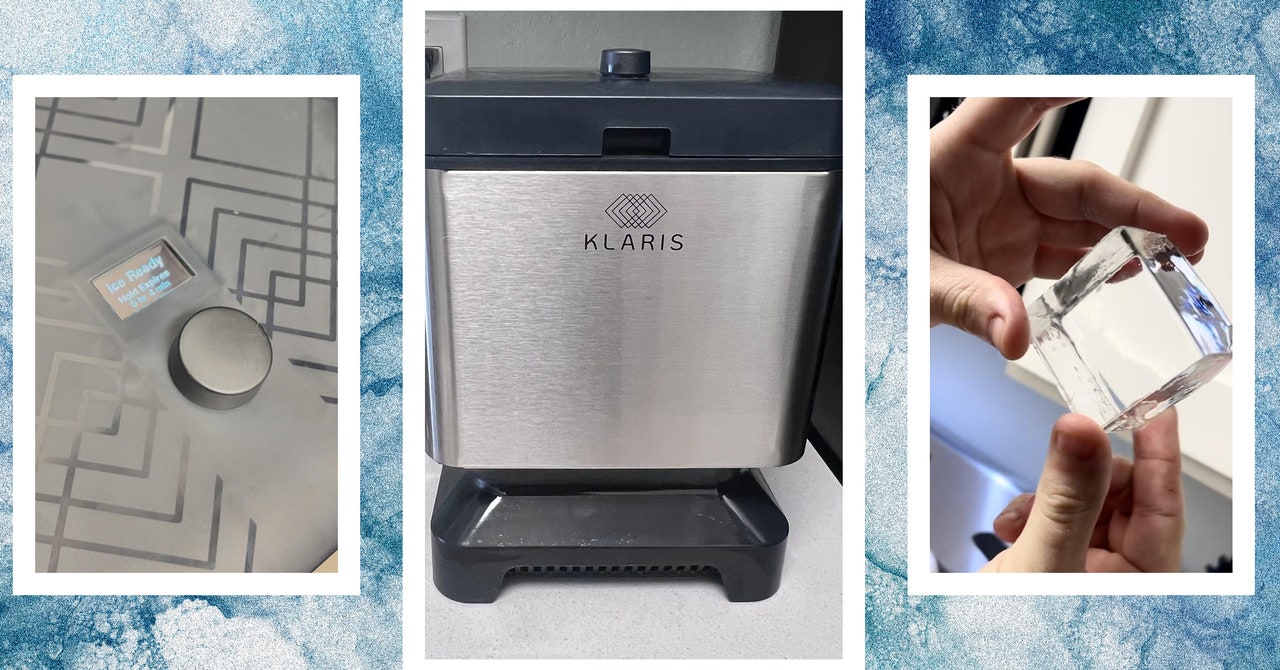The machine comes with the mold for four cubes; you can also separately buy a Collins mold that makes three prisms of ice for a taller glass. The molds are made of a thick silicone—much thicker than most standard ice molds. Once you fill the mold up with water, you just place it in the compartment inside, close the lid, push the knob, and let it do its thing. You don’t need to use filtered water. The faucet will work for your water source just fine because all of the impurities in the water, like minerals and gas, are going to get cleared out. I tested cycles with both filtered and tap water and the end result was the same.
Each cycle takes between eight and 12 hours to complete. That’s kind of a big window. It partially depends on how cold the water you fill your mold with is, and the temperature of the surrounding environment. It would be ideal for the Klaris to have a more concise timeframe for completing the cycle. There is a timer that shows how much time has elapsed but not how much time is remaining.
In my apartment with an air temperature hovering around 70 degrees Fahrenheit, the Collins rocks took around 10 hours, and the standard cubes took around eight. I’ve heard anecdotes that during the winter in cold regions, it can take as little as five hours.
Since it takes so long, I forgot to harvest my ice right away a few times; the feature
that allows you to keep it cold for up to five additional hours is helpful here. The one time I
completely forgot to check on it even after the delay, everything was back to being liquid water,
so I just started it over. You obviously need to plan a bit if you have a specific event you want to
use the ice for. The delay functions overall are a great touch and help you time out your ice
harvest, since sometimes it will finish overnight.
Making Things Clear
But since the machine plugs into the wall, I’m not sure why there can’t be a feature just to keep it cold until you open it back up. How does it work? The water is frozen layer by layer from the bottom up, which is known as directional freezing. (You don’t get this with a mold in your standard freezer because the cold air comes from all directions.) Simultaneously, an impeller-type fixture on the inside of the cover spins the water, which circulates the impurities up and out of the cube. This motion provides the necessary constant agitation, ridding the chance for the impurities to settle to the bottom.
The impeller needs to be submerged in the water, so you need to fill up the water in the mold to the fill line, which is higher than where the ice will ultimately reach. When the cycle is complete and you open the cover, it almost looks as if nothing happened because there’s a layer of liquid water above the clear ice. This water contains the impurities. You then pull the mold out and dump that water into the sink. You turn the mold upside down and twist and push a little and the rocks pop out. You need to pull them apart from each other with the plastic dividers that are in the mold. These can be a little flimsy and you don’t get extra, so I try carefully not to break them.

